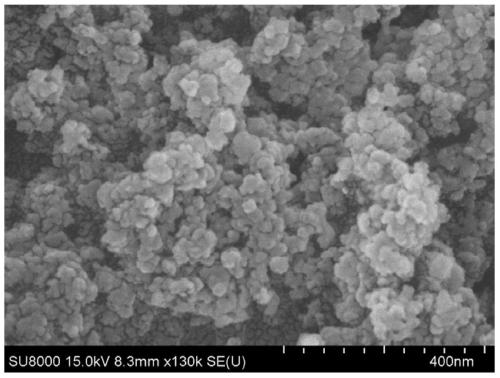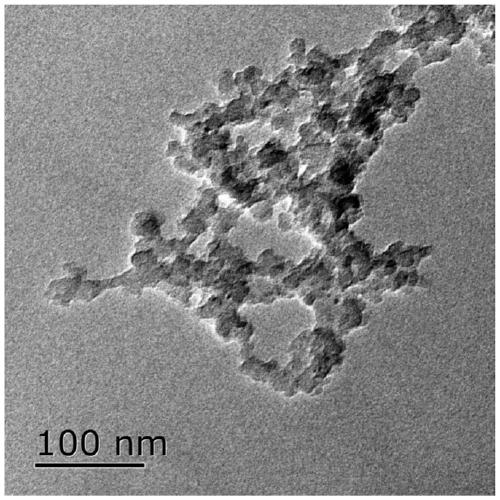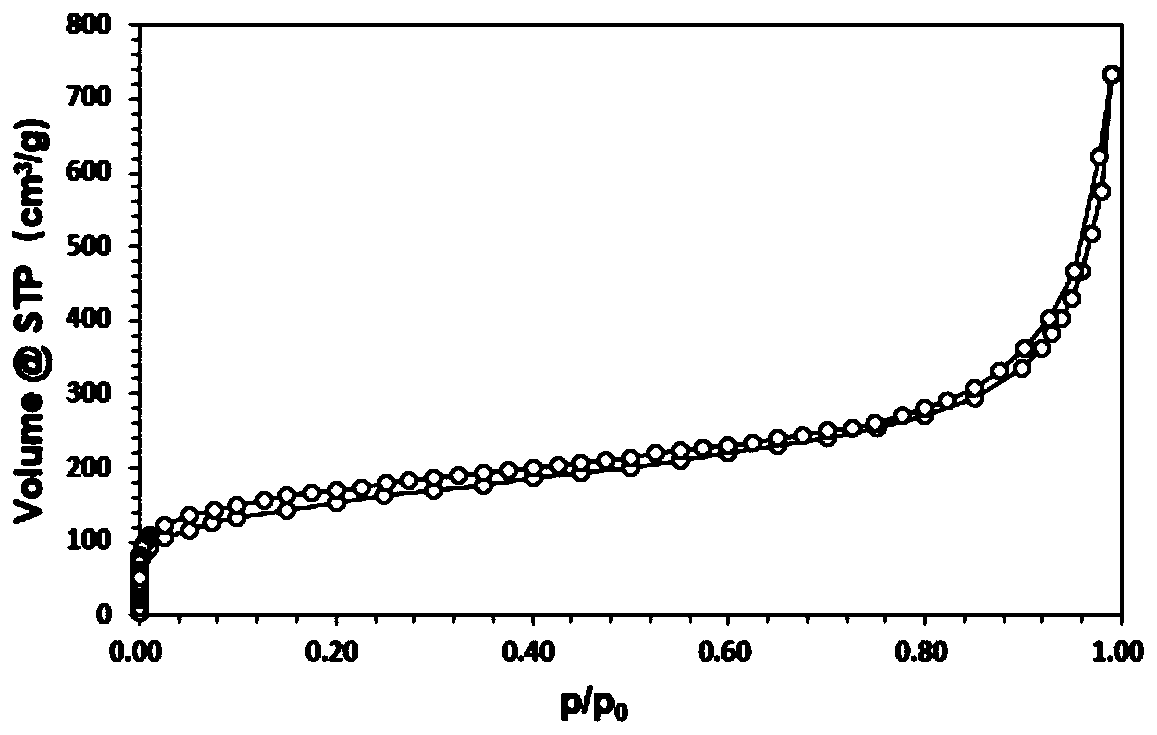Crosslinked polystyrene adsorbent, and preparation method and application thereof
A cross-linked polystyrene and adsorbent technology, applied in chemical instruments and methods, adsorbed water/sewage treatment, other chemical processes, etc., can solve the problems of poor dephenolization effect and low chlorine content, and achieve excellent adsorption performance, The effect of mild operating conditions and high wastewater dephenolization efficiency
- Summary
- Abstract
- Description
- Claims
- Application Information
AI Technical Summary
Problems solved by technology
Method used
Image
Examples
Embodiment 1
[0032] A cross-linked polystyrene adsorbent, specifically prepared through the following steps:
[0033] 1) Mix 5g waste foam, 200g carbon tetrachloride, and 10g anhydrous aluminum trichloride to obtain mixture A. At this time, the mol ratio of waste foam, carbon tetrachloride, and anhydrous aluminum trichloride is;
[0034] 2) Heating the mixture A at 70° C. for 12 h, and after the reaction is complete, terminate the reaction with absolute ethanol, and filter to obtain a crude product of cross-linked polystyrene;
[0035] 3) Alternately wash the cross-linked polystyrene crude product with ethanol and ethyl acetate for 6 times, that is, the cross-linked polystyrene crude product is washed with ethanol, and then washed with ethyl acetate, and reciprocated for 3 cycles, wherein, each wash The washing time is 1h, and the washing temperature is 60°C, that is, the time of each washing with ethanol and each time of washing with ethyl acetate is 1h, and the washing temperature is 60°...
Embodiment 2
[0039] The application of the cross-linked polystyrene adsorbent of embodiment 1 in sewage dephenolization, it may further comprise the steps:
[0040] Mix the cross-linked polystyrene adsorbent with a mass ratio of 0.001 and the phenol-containing sewage, and stir until the adsorption equilibrium is reached to obtain the dephenolized aqueous phase. Among them, the phenolic substance in the phenol-containing sewage is phenol (Phenol), which reaches the adsorption equilibrium The adsorption temperature is 30°C and the adsorption time is 120min.
[0041] In this example, in order to facilitate the detection of the dephenolization efficiency of the cross-linked polystyrene adsorbent in Example 1, the phenol-containing sewage in this example is simulated sewage containing phenol, wherein the initial concentration of phenol in the phenol-containing sewage is 1000 μg / g (ppm).
[0042] It can be seen from the test that the cross-linked polystyrene adsorbent in Example 1 is used to de...
Embodiment 3
[0044] The difference between this example and Example 2 is that the phenolic substance in the phenolic sewage is p-nitrophenol (4-NP).
[0045] It can be seen from the test that the cross-linked polystyrene adsorbent in Example 1 is used to dephenolize the sewage. After the adsorption operation, the p-nitrophenol content in the sewage is 738.15 μg / g, the dephenolization rate is 26.18%, and the adsorption capacity is 254.2 mg / g.
PUM
| Property | Measurement | Unit |
|---|---|---|
| adsorption capacity | aaaaa | aaaaa |
| specific surface area | aaaaa | aaaaa |
| specific surface area | aaaaa | aaaaa |
Abstract
Description
Claims
Application Information
 Login to View More
Login to View More - R&D
- Intellectual Property
- Life Sciences
- Materials
- Tech Scout
- Unparalleled Data Quality
- Higher Quality Content
- 60% Fewer Hallucinations
Browse by: Latest US Patents, China's latest patents, Technical Efficacy Thesaurus, Application Domain, Technology Topic, Popular Technical Reports.
© 2025 PatSnap. All rights reserved.Legal|Privacy policy|Modern Slavery Act Transparency Statement|Sitemap|About US| Contact US: help@patsnap.com



